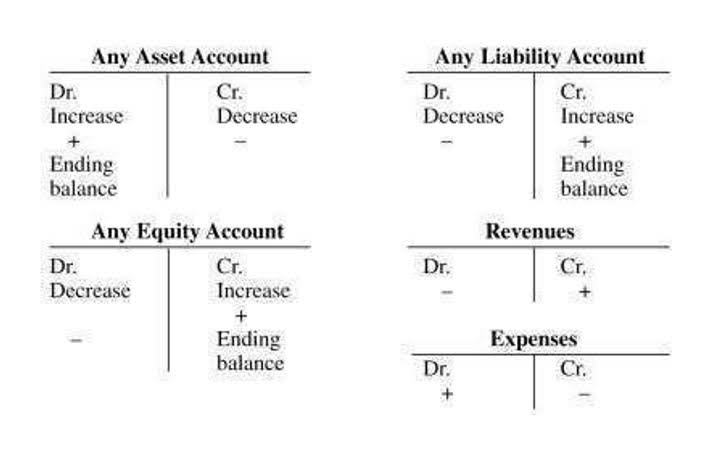Now, the fixed cost of manufacturing packets of bread is $10,000. Thus, the total manufacturing cost for producing 1000 packets of bread comes out to be as follows. Thus, the total variable cost of producing 1 packet of whole wheat bread is as follows. The difference between variable costs and fixed costs is as follows. Therefore, it is not advised to continue selling your product if your contribution margin ratio is too low or negative. This is because it would be quite challenging for your business to earn profits over the long-term.
Resources
- Variable costs are not typically reported on general purpose financial statements as a separate category.
- Accordingly, the net sales of Dobson Books Company during the previous year was $200,000.
- Thus, the following structure of the contribution margin income statement will help you to understand the contribution margin formula.
- The contribution margin is not necessarily a good indication of economic benefit.
- The contribution margin ratio is also known as the profit volume ratio.
- Furthermore, this ratio is also useful in determining the pricing of your products and the impact on profits due to change in sales.
- On the other hand, net sales revenue refers to the total receipts from the sale of goods and services after deducting sales return and allowances.
A high contribution margin indicates that a company tends to bring in more money than it spends. Investors and analysts may also attempt to calculate the contribution margin figure for a company’s blockbuster products. For instance, a beverage company may have 15 different products but the bulk of its profits may come from one specific beverage.
- The concept of contribution margin is applicable at various levels of manufacturing, business segments, and products.
- Thus, the contribution margin ratio expresses the relationship between the change in your sales volume and profit.
- Based on the contribution margin formula, there are two ways for a company to increase its contribution margins; They can find ways to increase revenues, or they can reduce their variable costs.
- However, they will play an important part in calculating the net income formula.
- One packet of whole wheat bread requires $2 worth of raw material.
Everything You Need To Master Financial Modeling
Either way, this number will be reported at the top of the income statement. This cm ratio is because the breakeven point indicates whether your company can cover its fixed cost without any additional funding from outside financiers. This means Dobson books company would either have to reduce its fixed expenses by $30,000. On the other hand, net sales revenue refers to the total receipts from the sale of goods and services after deducting sales return and allowances. Variable Costs depend on the amount of production that your business generates.
Fixed Cost vs. Variable Cost
The companies that operate near peak operating efficiency are far more likely to obtain an economic moat, contributing toward the long-term generation of sustainable profits. My Accounting Course is a world-class educational resource developed by experts to simplify accounting, finance, & investment analysis topics, so students and professionals can learn and propel their careers. The following are the disadvantages of the contribution margin analysis. Take your learning and productivity to https://www.bookstime.com/articles/notes-payable-vs-accounts-payable the next level with our Premium Templates. Shaun Conrad is a Certified Public Accountant and CPA exam expert with a passion for teaching.
Contribution Margin: Definition, Overview, and How To Calculate
A low margin typically means that the company, product line, or department isn’t that profitable. An increase like this will have rippling effects as production increases. Management must be careful and analyze why CM is low before making any decisions about closing an unprofitable department or discontinuing a product, as things could change in the near future. Investors and analysts use the contribution margin to evaluate how efficient the company is at making profits. For example, analysts can calculate the margin per unit sold and unearned revenue use forecast estimates for the upcoming year to calculate the forecasted profit of the company.
- Fixed costs are used in the break even analysis to determine the price and the level of production.
- In other words, it measures how much money each additional sale “contributes” to the company’s total profits.
- Suppose Company A has the following income statement with revenue of 100,000, variable costs of 35,000, and fixed costs of 20,000.
- While contribution margins only count the variable costs, the gross profit margin includes all of the costs that a company incurs in order to make sales.
- Say that a company has a pen-manufacturing machine that is capable of producing both ink pens and ball-point pens, and management must make a choice to produce only one of them.
- Investors and analysts may also attempt to calculate the contribution margin figure for a company’s blockbuster products.
Where C is the contribution margin, R is the total revenue, and V represents variable costs. The overarching objective of calculating the contribution margin is to figure out how to improve operating efficiency by lowering each product’s variable costs, which collectively contributes to higher profitability. The formula to calculate the contribution margin is equal to revenue minus variable costs. The contribution margin (CM) is the profit generated once variable costs have been deducted from revenue. Furthermore, this ratio is also useful in determining the pricing of your products and the impact on profits due to change in sales. Accordingly, in the Dobson Books Company example, the contribution margin ratio was as follows.








